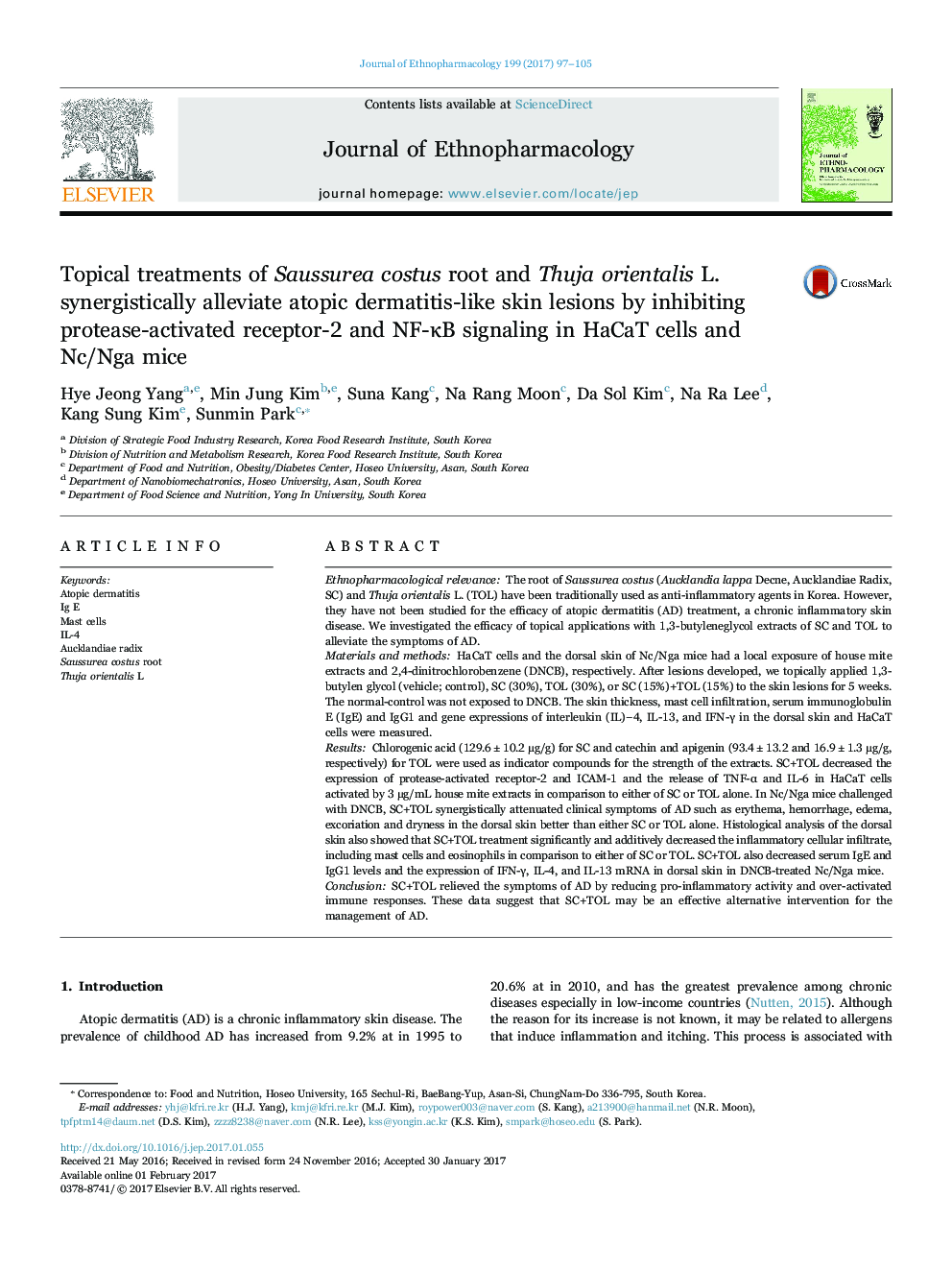| کد مقاله | کد نشریه | سال انتشار | مقاله انگلیسی | نسخه تمام متن |
|---|---|---|---|---|
| 5556284 | 1560363 | 2017 | 9 صفحه PDF | دانلود رایگان |

Ethnopharmacological relevanceThe root of Saussurea costus (Aucklandia lappa Decne, Aucklandiae Radix, SC) and Thuja orientalis L. (TOL) have been traditionally used as anti-inflammatory agents in Korea. However, they have not been studied for the efficacy of atopic dermatitis (AD) treatment, a chronic inflammatory skin disease. We investigated the efficacy of topical applications with 1,3-butyleneglycol extracts of SC and TOL to alleviate the symptoms of AD.Materials and methodsHaCaT cells and the dorsal skin of Nc/Nga mice had a local exposure of house mite extracts and 2,4-dinitrochlorobenzene (DNCB), respectively. After lesions developed, we topically applied 1,3-butylen glycol (vehicle; control), SC (30%), TOL (30%), or SC (15%)+TOL (15%) to the skin lesions for 5 weeks. The normal-control was not exposed to DNCB. The skin thickness, mast cell infiltration, serum immunoglobulin E (IgE) and IgG1 and gene expressions of interleukin (IL)â4, IL-13, and IFN-γ in the dorsal skin and HaCaT cells were measured.ResultsChlorogenic acid (129.6±10.2 μg/g) for SC and catechin and apigenin (93.4±13.2 and 16.9±1.3 μg/g, respectively) for TOL were used as indicator compounds for the strength of the extracts. SC+TOL decreased the expression of protease-activated receptor-2 and ICAM-1 and the release of TNF-α and IL-6 in HaCaT cells activated by 3 μg/mL house mite extracts in comparison to either of SC or TOL alone. In Nc/Nga mice challenged with DNCB, SC+TOL synergistically attenuated clinical symptoms of AD such as erythema, hemorrhage, edema, excoriation and dryness in the dorsal skin better than either SC or TOL alone. Histological analysis of the dorsal skin also showed that SC+TOL treatment significantly and additively decreased the inflammatory cellular infiltrate, including mast cells and eosinophils in comparison to either of SC or TOL. SC+TOL also decreased serum IgE and IgG1 levels and the expression of IFN-γ, IL-4, and IL-13 mRNA in dorsal skin in DNCB-treated Nc/Nga mice.ConclusionSC+TOL relieved the symptoms of AD by reducing pro-inflammatory activity and over-activated immune responses. These data suggest that SC+TOL may be an effective alternative intervention for the management of AD.
311
Journal: Journal of Ethnopharmacology - Volume 199, 6 March 2017, Pages 97-105